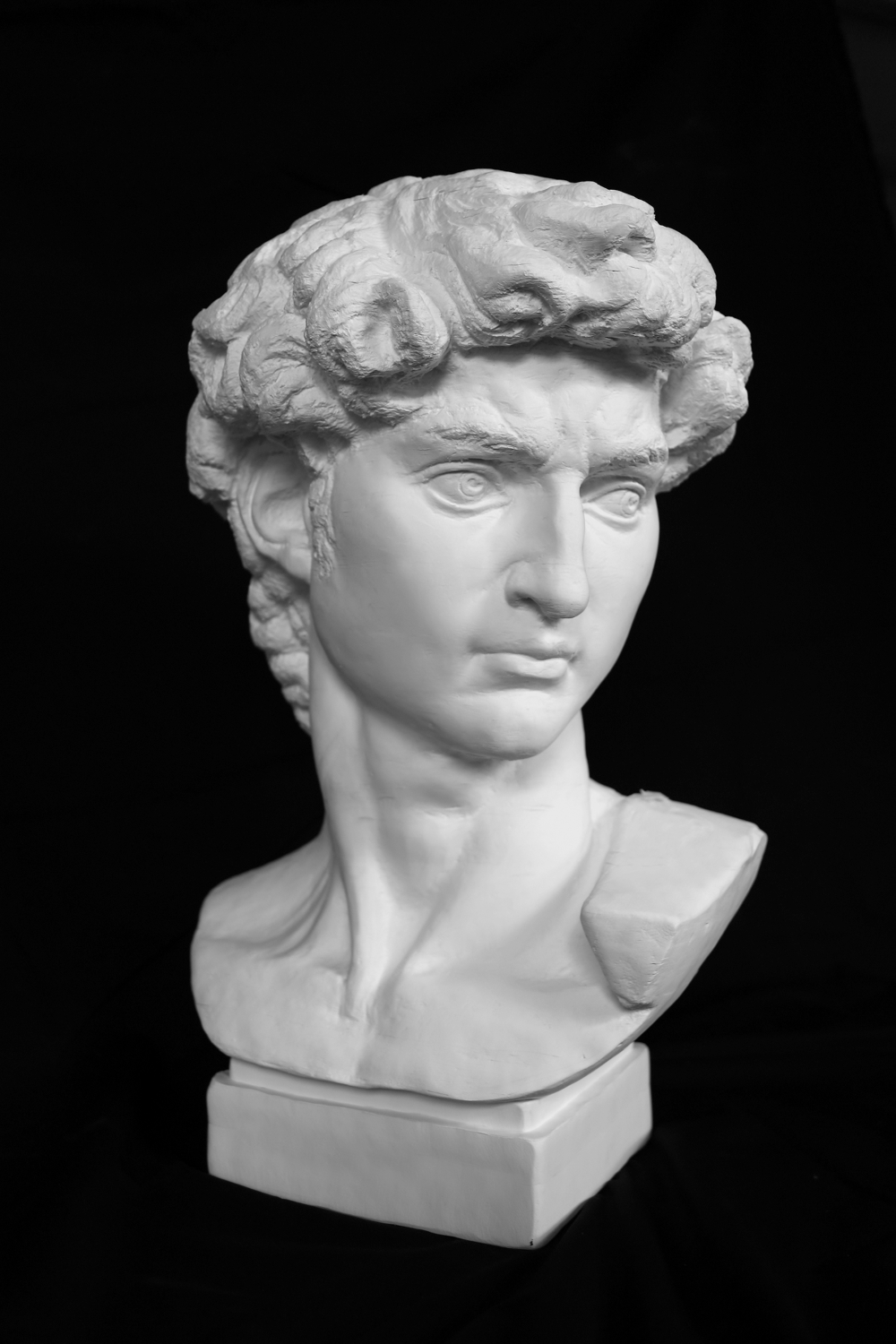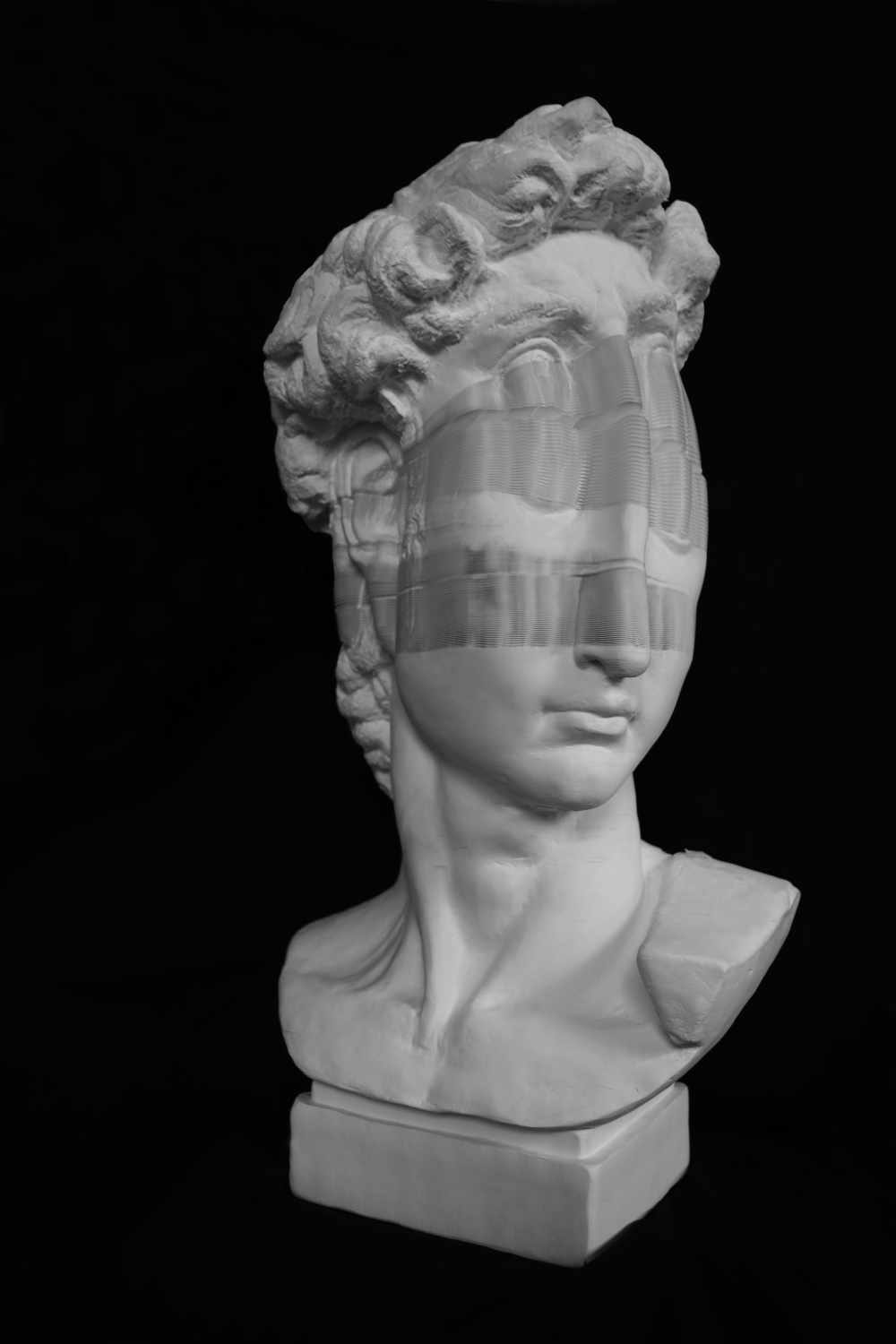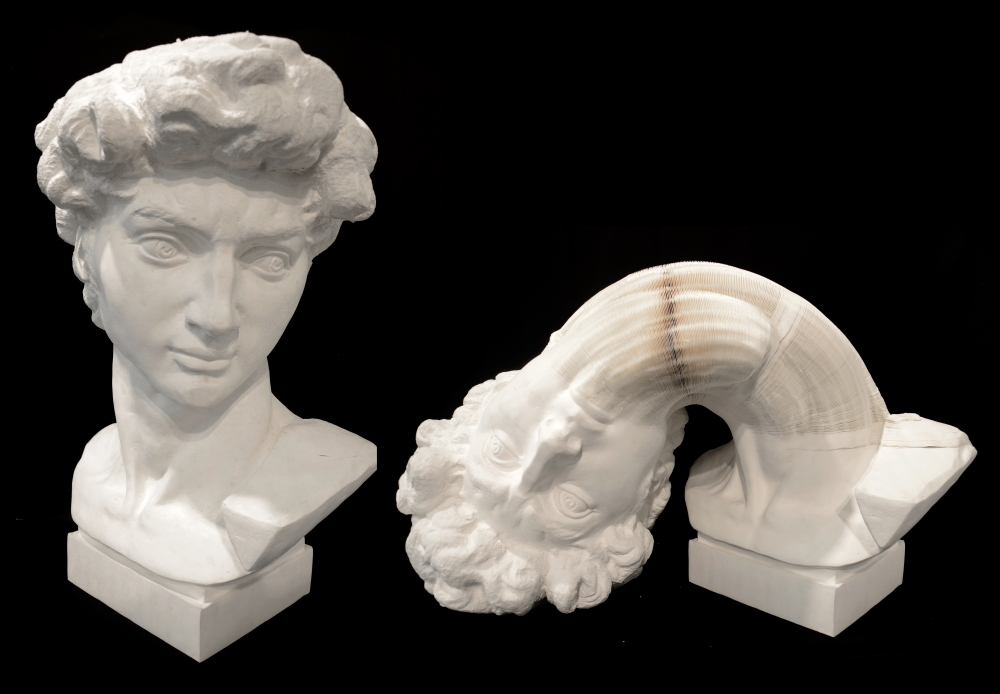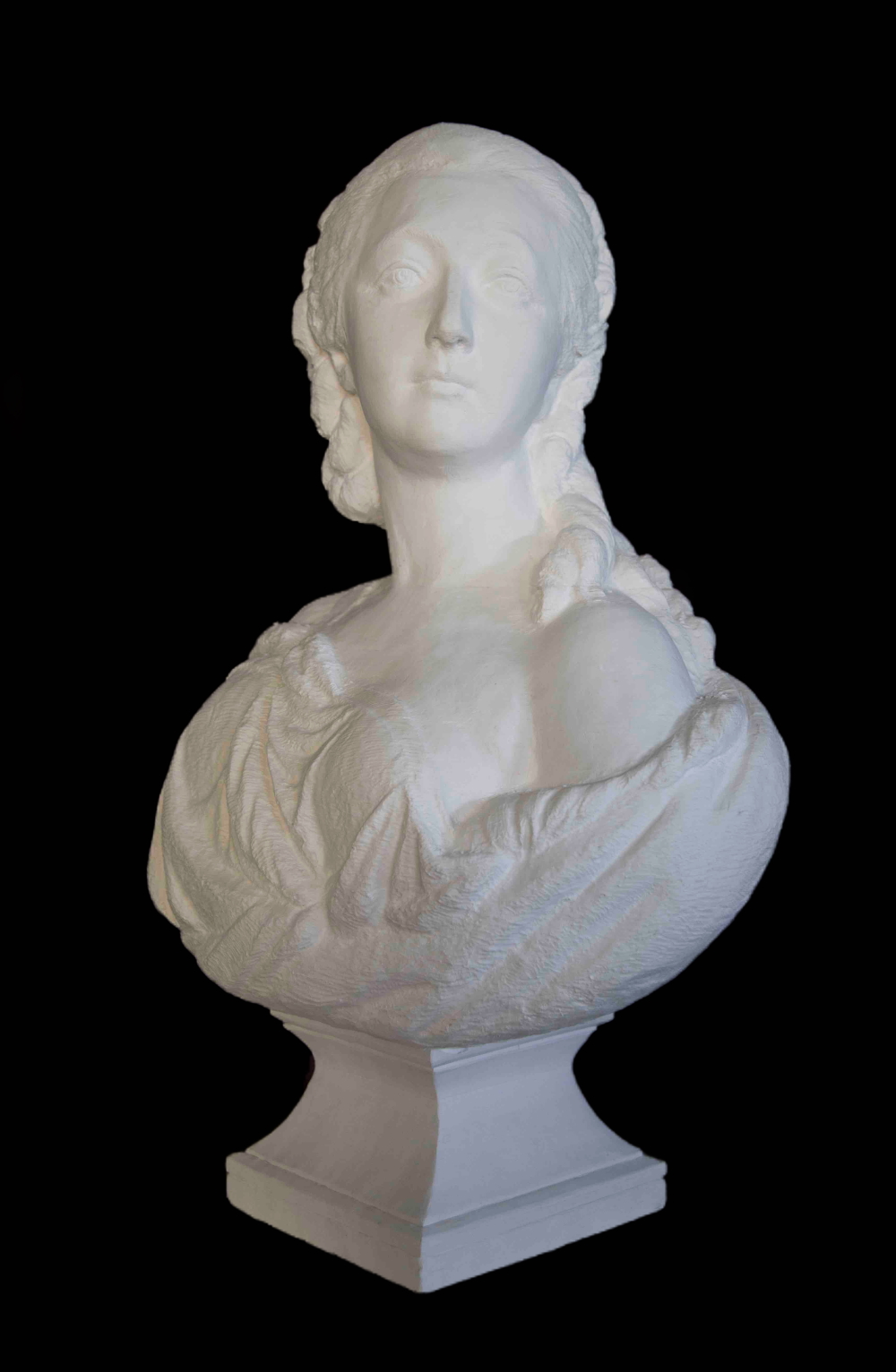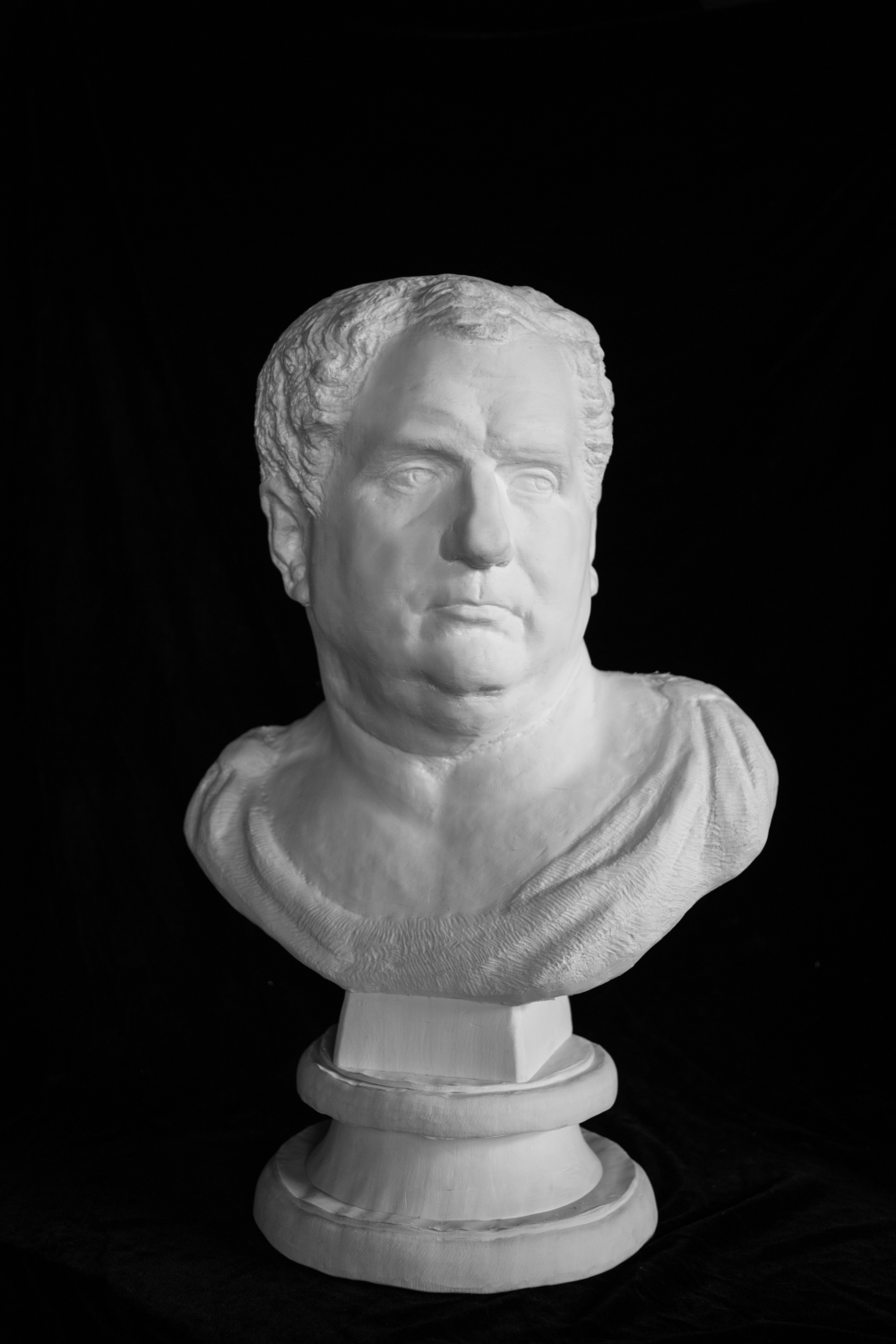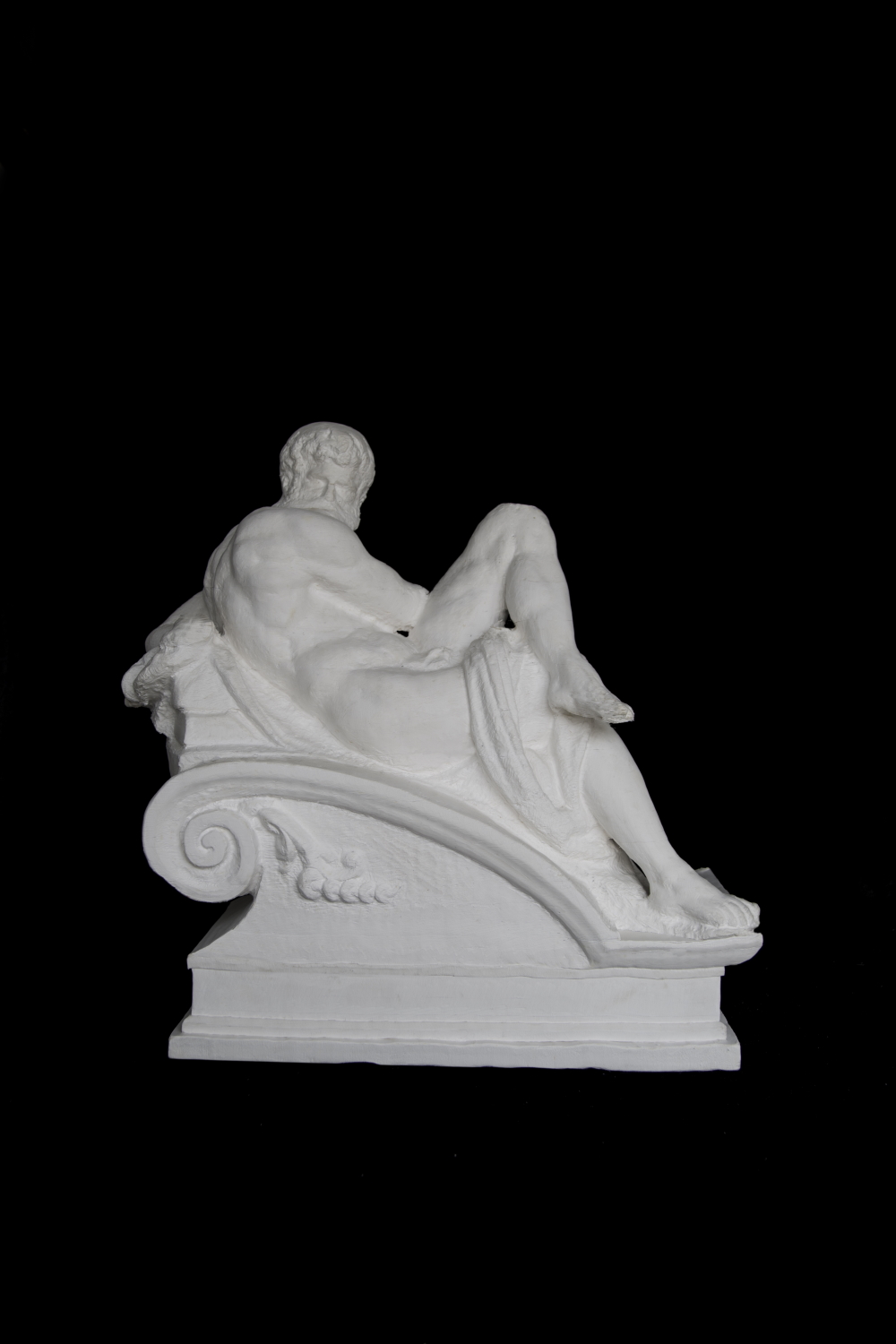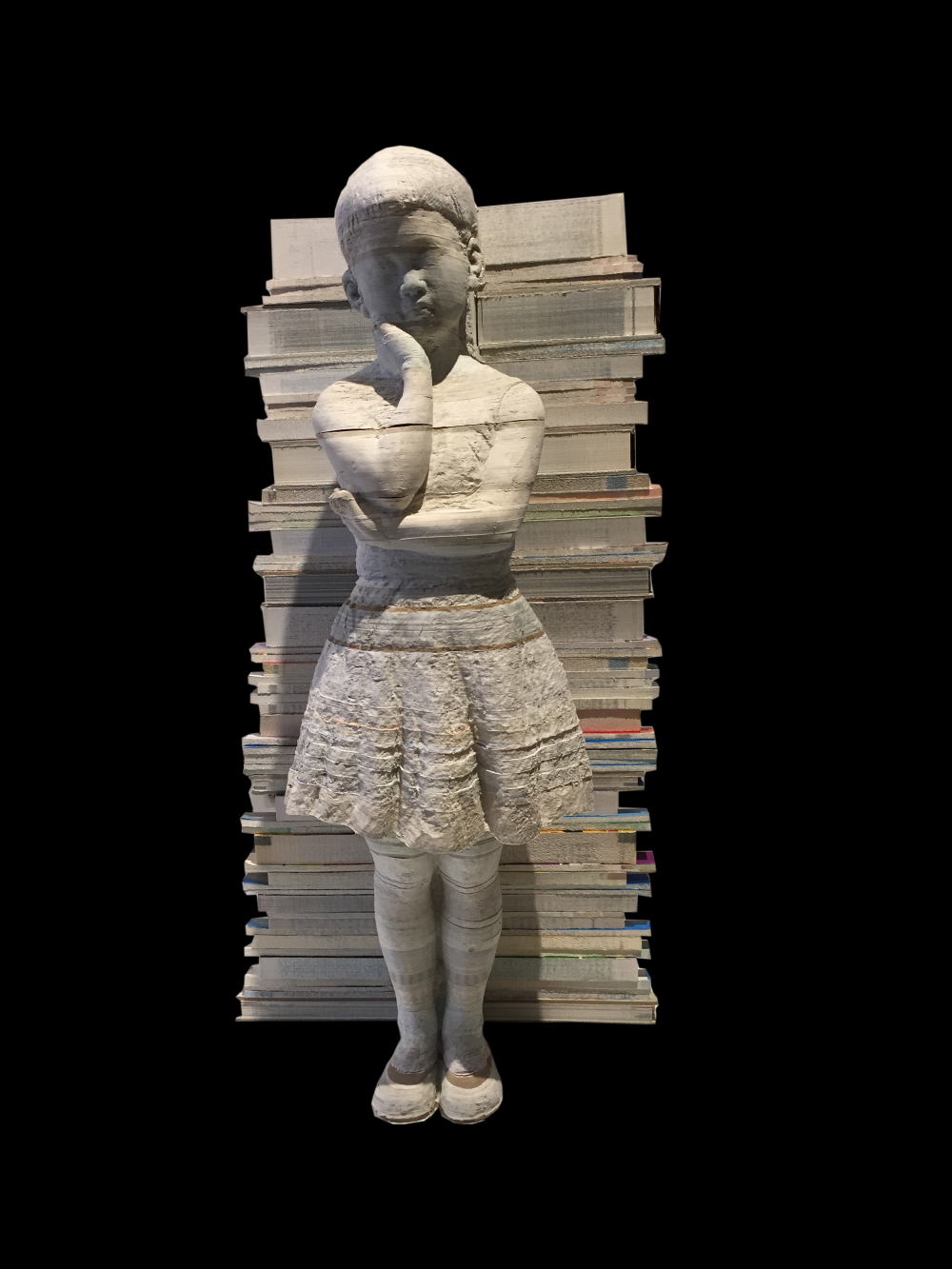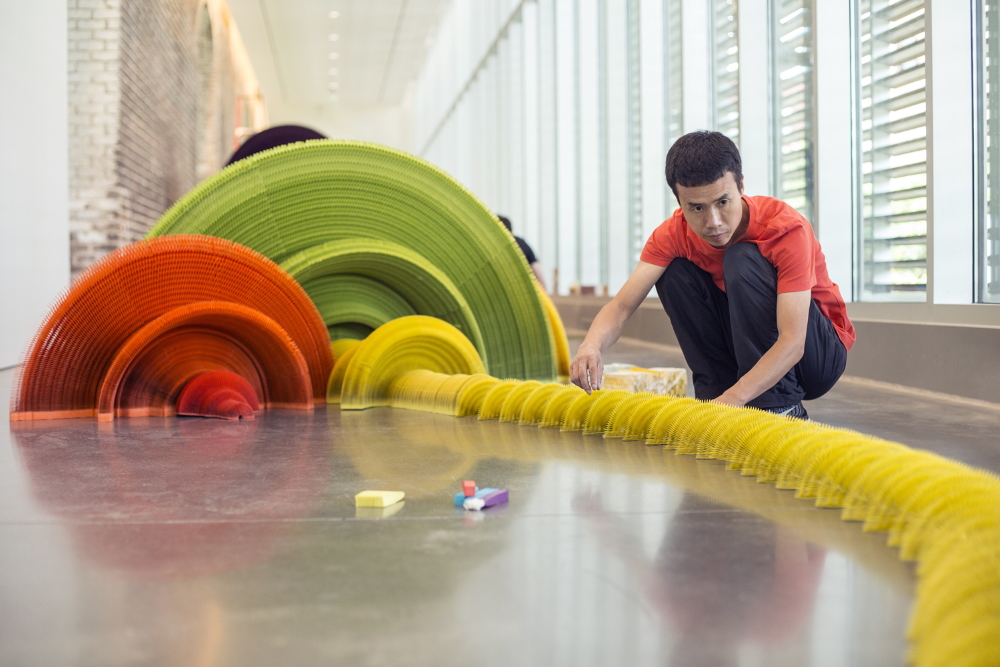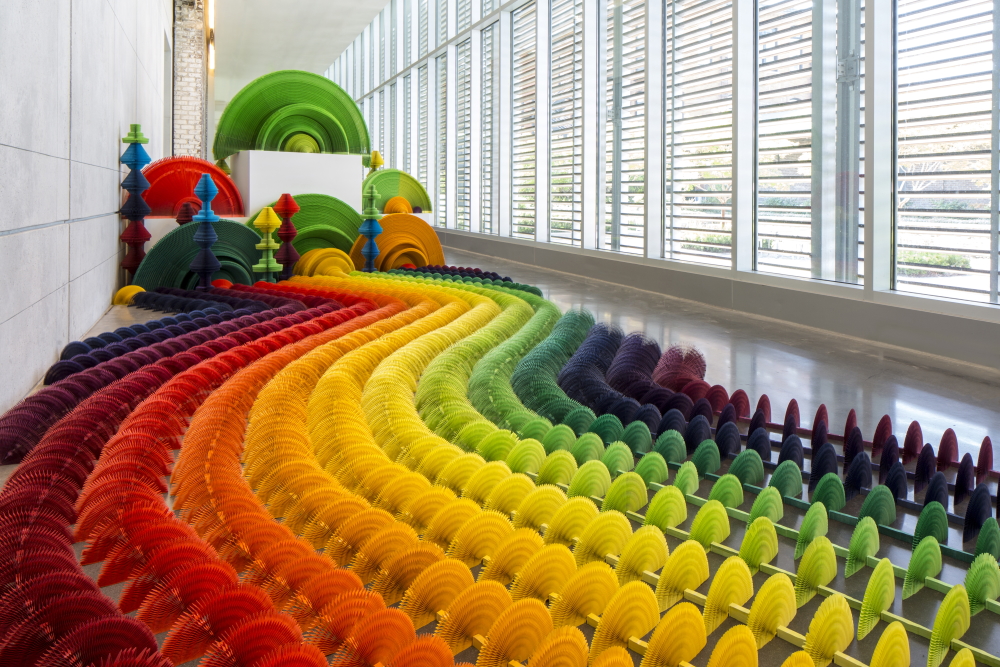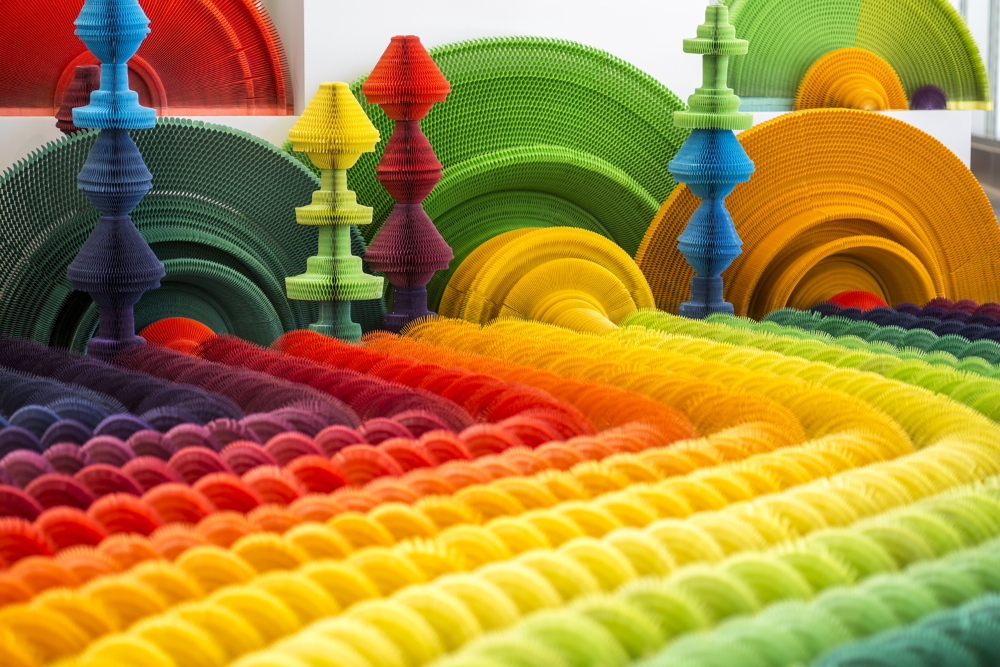Li Hongbo
paper-sculptor
China
Nothing is as it seems. The astoundingly „real world“ that’s created by Li Hongbo deceives the viewer. His artworks that for example resemble ancient Greco-Roman sculptures look stable as solid marble or porcelain at first sight. But once pulled they „reveal their near-amorphous make-up“ (Guardian). You won’t believe your eyes. The solution of the riddle: The creator uses concertinas made of thousands sheets of glued paper to carve busts in. The play with the viewers‘ perception is surprising and mindblowing.
Li Hongbo
paper-sculptor
China
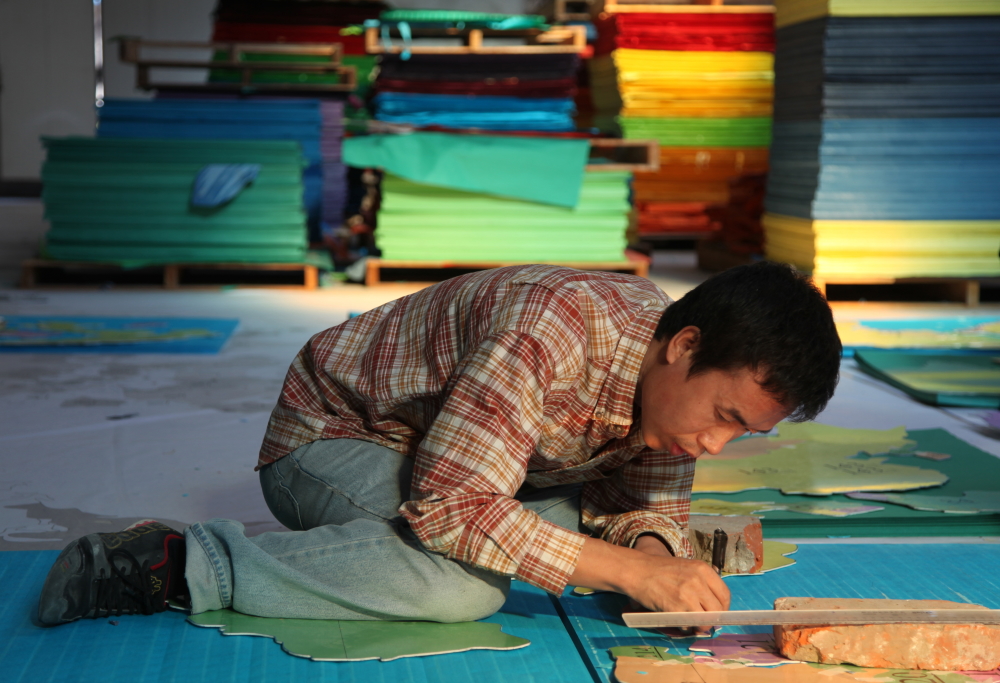
The starting shot for this globally unique project came from a pistol. It was such a weapon that Li Hongbo created first and premiered with at an exhibition in 2010. Already as a kid the former book publisher discovered the flexible nature of paper through Chinese paper toys and lanterns. „He used the ‚paper gourd‘ technique, which has existed in China for a long time, to make a handgun. Solid in form and usually attached to killing, and yet, the sculptor turned it into a tool intended for play, or possibly decoration. This way, it lost both the form and the culture inherent to such a weapon. It was stripped of its original purpose and given a new life. It became a game“ (whitewalls.ch).
The development process of his artworks Li Hongbo described an interview with designboom.com: „I layer sheet of paper one by one attaching each with glue at specific points to create a honeycomb pattern. Each sheet is glued individually by hand until I’ve created a small block. I use a woodworking saw to create the initial cuts, discarding excess paper and reducing the area of the block into the form I’m striving for. As the saw becomes impractical for cutting, I switch to an angle grinder. This allows me to achieve greater detail and I put the finishing touches on the sculpture with sandpaper.“
Before Li Hongbo became famous for his reinvention of paper-art a solid education had to be completed first. Being born in Jilin/China in 1974, „he earned his Bachelor of Fine Arts degree from Jilin Normal University in 1996, followed by a Master of Fine Arts (MFA) degree from the Folk Art Department in 2001 plus a second MFA degree in Experimental Art in 2010 – both from the Central Academy of Fine Arts in Beijing“ (Wikipedia).
One specific Chinese saying the founding Director of the China Paper Art Research Institute at Jilin Normal University loves to quote in particular: „‚Life is as fragile as paper‘.“ The proverb had a huge impact on him obviously. Nowadays his sculptures that „open out like the bellows of an accordion, revealing a beautiful honeycomb pattern hidden between each layer“ (theculturetrip.com) and can be twisted, elongated into any shape, are exhibited in museums and galleries worldwide. For his cross between folk craft and high art Li received various prestigious awards. And of course his creations are sought-after collector’s items too.
Li Hongbo, who is „fascinated by the endless possibilities of paper“ (artsy.net), said while talking to designandlive.pub about his art this poetic sentence: „May I be like paper: pure at birth, silent at death, and blossoming like flowers even in my withered bones.“
Li Hongbo lives and works in Beijing.
Interview July 2022
Paper-busts in motion: when function follows form
INTUITION/IMAGINATION
How does intuition present itself to you – in form of a suspicious impression, a spontaneous visualisation or whatever - maybe in dreams?
My intuitions come from long-term study, observation, thinking, and practice.
Will any ideas be written down immediately and archived?
Yes. I have a habit of sketching and jotting down information in short words.
Are great ideas based on intuition and do they reveal themselves in a kind of clear as well complete version that just has to be realized? Or is it endless trials and errors (after the first spark) that result in constant developments up until the final result?
I don't really trust intuition. My personal approach to creation is to keep thinking and enriching an idea, like cultivating a seed, taking root, blossoming, and finally bearing fruit.
What if there is a deadline, but no intuition? Does the first fuel the latter maybe?
The working habit has gradually formed based on the accumulation of thinking for a long time. Ideas usually have already existed when receiving the invitation, I would just try to enrich the scheme before the deadline. So the deadline fuels the creation doesn’t exist.
INSPIRATION
What inspires you and how do you stimulate this special form of imaginativeness?
The survival wisdom in nature, the things people take for granted, and the new scientific achievements all inspire my creative ideas. All this wisdom is closely related to us, and it is directly related to everyone. Taking this as the entry point of creation will better shorten the distance between the audience and the work, form a natural sense of intimacy, and guide the audience into the thinking behind the work.
Imagination is actually stimulated through the explosion of knowledge reserve at a certain moment, and the tipping point is the reaction formed by the collision between my concerns and knowledge reserve.
How do you separate the good from the bad and which ideas are worthwhile to be explored further or whether one idea has the potential of being outstanding really?
My personal perception is whether the work is innovative or not. Good and bad are uncertain concepts, and they are perceived differently in different contexts. As a Chinese saying goes, "No literature comes first, no military force comes second."
When I feel that the work has become a complete closed loop from thought to entity, or at the present stage, it has become a closed loop, I think it has the possibility to be exhibited and ready to be displayed to the public. If a closed loop has not been formed, I will keep exploring.
Has it to appeal to you primarily or is its commercial potential an essential factor?
For me, the creativity and significance of artworks to art history are the most important. Business matters should be considered by the gallery and other professional commercial organizations.
Do you revisit old ideas or check what colleagues/competitors are up to at times?
I will always look at my past works and ideas to remind me of my past shortcomings and strengths and to give a warning to my future work. I have artists that I like very much and it is a pleasure for me to see their exhibitions or creations, which also motivate and inspire me to create.
CREATIVITY
Which time/place/environment suits your creative work process the best (tranquillity or pressure) and which path do you take from theory/idea to creation?
Tranquil environment. First I have an idea, then sketch it, start practicing it, solve problems, and finally get it done.
What is better in the realization process: speed and force creativity i.e. grasp the magic of the moment, or a slow, ripening process for implementation/elaboration?
Most of my work has a slow maturing creative process and careful production. I can find a record of almost every piece, from sketches to exhibitions.
If problems occur during creativity or one’s stuck even, how can these be solved?
Keep trying and experimenting with ways to solve problems. The process of experimentation is full of uncertainties and challenges and often leads to new knowledge.
How important are self-doubt and criticism (by others) during such a process i.e. is it better to be creative on your own, only trust your own instincts, or in a team?
I need to use my creativity and believe in myself. If an idea is rejected for the moment, I don't get upset. I keep it and wait for it to be perfected in the future. I also accept criticism and suggestions to help me think.
However, a lot of technical and physical work needs to be done through teamwork, so my team is a very important help for me.
Should a creative always remain true to him-/herself including taking risks & going against the flow or must one, for reasons of (commercial) survival, make concessions to the demands of the market, the wishes of clients and the audience’s expectations?
Be true to yourself first, then talk about other things later.
How is innovation still possible if one has established a distinctive style and, just in case, is it good to be ahead of one’s time even one hazards not being understood?
Style is a representation, not the object of adherence. Constant inner-thinking and knowledge reserve are necessary to maintain lasting creativity. I don't mind being "an artist who is ahead of the times but not understood and recognized by the present world", but I don't expect too much. I believe in "just doing things and not asking for the future".
When does the time come to end the creative process, to be content and set the final result free - or is it work-in-progress with an endless possibility of improvement?
In fact, there is no perfect work. Looking back, every piece of work has some imperfections and can be further made. But some works need time to end, so the imperfections leave regrets.
In case of failure or - worse - a creativity crisis how do you get out of such a hole?
Keeping the habit of learning and thinking, constantly exploring and experimenting, will basically get rid of the dilemma of exhaustion.
SUCCESS
Should/can one resist the temptation to recycle a ‘formula’ one’s successful with?
Non-repetition is the embodiment of the artist’s creativity and artistic vitality. It’s also unrealistic not to repeat it at all, but we should try to avoid it.
Is it desirable to create the ultimate/timeless work, but doesn’t “top of the ladder” bring up the question of “what’s next?” i.e. isn’t such a personal peak “the end”?
I hope I can create the work, but let it be. I look forward to the day when I can take a rigorous creative path and finally reach the realm of "doing what I want". For artists, the peak of creation is the end of life. There will be progress unless you're an unmotivated artist.
MY FAVORITE WORK:
Until now, there are no works that can represent me, these works can only represent my thoughts for a period of time. I think that at the end of my life, every work can represent me because that is the node of exploration that I did by myself and will not be renewed. Today is not the time to talk about this topic.
